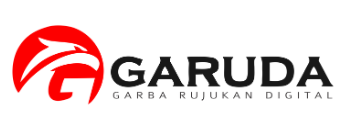THE ROLE OF CITY BRANDING ON VISITORS’ REVISIT INTENTION: A STUDY IN MALANG, INDONESIA
DOI:
https://doi.org/10.24002/kinerja.v22i1.1239Abstract
The main purpose of this paper is to investigate the influence of city branding on visitors’ revisit intention to Malang city which is well-known as a holiday destination in Indonesia. Study about city branding has been conducted by many researchers before, but study that applied in an enclave city, like Malang, has not been thoroughly examined. In order to make this study result becomes a guideline to design proper marketing strategies, this study will focused on the impact of three city branding attributes that is city image, city authenticity and city uniqueness on visitors’ revisit intention. A quantitative, explanatory approach conducted with visitors’ who chose Malang city as their holiday destination. Results indicate that city branding has a relationship with visitors’ revisit intention and city image plays an important role on the relationship.
References
Aminudin Muhammad (2016), [ONLINE]. Beautiful Malang Branding City Kota Menjual Keindahan. Tersedia di: http://www.detik.com/news/berita-jawa-timur/3207407/ beautiful-malang-branding-city-kota-menjual-keindahan. [11 Mei 2016]
Ashworth, G.J. 2009. The Instruments of Place Branding: How Is It Done? European Spatial Research and Policy. 16(1). pp.9-22.
Badan Pusat Statistik, 2016. Jumlah Kedatangan Wisatawan Mancanegara Ke Indonesia Menurut Pintu Masuk, 1997 – 2015. [ONLINE]. Tersedia: https://www.bps.go.id/linkTabelStatis/view/id/1387. [4 Januari 2017]
Baloglu, S. and Brinberg, D. 1997. Affective Images of Tourism Destinations. Journal of Travel Research. 11-15.
Barnes. S.J., Mattsson J. and Sorensen F. 2016, Remembered Experiences and Revisit Intentions: A Longitudinal Study of Safari Park Visitors, Tourism Management, 57, 286-294.
Basaran, U. 2016. Examining the Relationship of Cognitive, Affective and Conative Destination Image: A Research of Safranbolu, Turkey. International Business Research, 9(5), 164-179.
Berci, F, Mommaas, H and Synghel, K. 2002. City branding: Image building and building images. NAI Publisher. Rotterdam.
Beverland, M.B., Lindgreen, A. and Vink, M.W. 2008. Projecting Authenticity through Advertising: Consumer Judgments of Advertisers’ Claims. Journal of Advertising. 37. 5-15.
Boo, S., Busser, J. and Baloglu, S. 2010. A Model of Customer-based Brand Equity and Its Application to Multiple Destinations, Tourism Management, 30, 219-231.
Bowen, J.T. & Shoemaker, S. 1998. Loyalty: A Strategic commitment. Cornell hotel and restaurant administration quarterly, 39(1), 12-25.
Boyd, J.M. 2012. Authenticity and Aura. A Benjaminian Approach to Tourism. Annals of Tourism Research. 39(1), 269-289.
Cesya Rizkika P. and Ananda Sabil H. 2014. The Determinants of Visitor’s Revisit Intention: A Lesson from Ijen Car Free Day. Asia-Pacific Management and Business Application, 3(2), 74-85.
Chen, C. and Tsai, D. 2007. ‘How destination image and evaluative factors affect behavioural intentions. Tourism Management,Vol.28(4), 1115-1122.
Chin, W.W. and Newsted, P.R. 1999. Structural Equation Modelling Analysis with Small Samples Using Partial Least Squares, Statistical Strategies for Small Sample Research, Published by: Sage Publications.
Cohen, Eric. 1988. Authenticity and Commoditization in Tourism. Annals of Tourism Research. 15(2). 371-386.
Cronin, J.J., Brady, M.K. and Hult, M.K. 2000. Assessing the effects of quality, value, and customer satisfaction on consumer behavioral intentions in service environments. Journal of Retailing. 76(2), 193-218
Evans, G. 2003. Hard-branding the Cultural City – From Prado to Prada. International Journal of Urban and Regional Research. 27 (2). 417-440.
Getty, J.M. and Thompson, K.N. 1994. The relationship between quality, satisfaction and recommending behaviour in lodging decision. Journal of Hospitality and Leisure Marketing, 2(3), 3-22.
Gurbuz, E. 2008. Retail store branding in Turkey: Its effect on perceived quality, satisfaction and loyalty. Euromed Journal of Business. 3(3). 286-304.
H. Chou. 2013. The Effect of Visitor’s consumption experience and tourism image on Tourist Satisfaction and Revisit Intention of Taiwan’s Night Market. GSTF International Journal on Business Review, 3(1), 129-134.
H. Qu, L.H. Kim and H.H. Im. 2011. A Model of Destination Branding: Integrating the Concepts of the Branding and Destination Image. Tourism Management, 32, 465-476.
Hatch, M.J. and Schultz M. 2008. The Dynamics of Organizational Identity. Human Relations 55(8). 989-1018.
Jones, S. 2010. Negotiating Authentic Objects and Authentic Selves. Beyond the Deconstruction of Authenticity. Journal of Material Culture, 15 (2), 181-203.
Kandapully, J. and Suhartanto, D. 2000. Customer loyalty in the hotel industry: the role of customer satisfaction and image. International Journal of Contemporary Hospitality Management, 12(6), 346-351.
Kavaratzis, M and Ashworth, G.J. 2005. City Branding: An effective assertion of identity or a transitory marketing trick? Tijdschrift voor Economische en Sociale Geografie. 96(5). 506-514.
Kavaratzis, M. and Ashworth, G.J. 2007. Partners in Coffee shops, Canals, and Commerce: Marketing the City of Amsterdam. Cities. 24(1). 16-25.
Keller, K.L. 2013. Strategic Brand Management. Building, Measuring and Managing Brand Equity. Pearson Education Limited. England.
Kementerian Pariwisata Republik Indonesia. 2017. Pekembangan wisatawan Nasional tahun 2011 – 2016. [ONLINE]. Tersedia: http://www.kemenpar.go.id/asp/ detil.asp?c=112&id=1358. [31 Januari 2017].
Kemp, E., Childers, C.Y. and Williams, K.H. 2012. Place
Branding: Creating Self-Brand Connections and Brand Advocacy. Journal of Product and Brand Management. 21(7). 508-515.
Kim, Hong-Bumm and Sanggun, Lee. 2015. Impacts of city personality and Image on Revisit Intention. International Journal of Tourism Cities, 1(1), 50-69.
Kim, Hyojin and Bonn, M.A. 2015. Authenticity Do Tourist perceptions of winery experiences affect behavioral intentions? International Journal of Contemporary Hospitality Management, 28(4), 839-859.
Kolar, Tomaz and Vesna Zabkar. 2007. The Meaning of Tourists’ Authentic Experiences for the Marketing of Cultural Heritage Sites. Economic and Business Review. 9 (3). 235-256.
Kotler, P., Rein, I., and Haider, D. 1993. Marketing Places: Attracting Investment, Industry, and Tourism to Cities, States and Nations. MaxWell Macmillan Int, New York.
Langer, R. 2001. Place images and place marketing, Working Paper, vol 2001-03, Copenhagen Business School, Copenhagen.
Lee,Cheng-Fei. 2015. Tourist Satisfaction with Factory Tour Experience. International Journal of Culture, Tourism and Hospitality Research, 9(3), 261-277.
Lin, Hsing-Hui. 2011. A Multidimensional Customer-based Brand Equity and Its Application to Religious Events: The Case of Mazu. A Dissertation in Hospitality Administration. University of Texas Tech.
McCannell, Dean. 1973. Staged Authenticity: Arrangements of Social Space in Tourist settings. American Journal of Sociology.79 (3). 589-603.
Mkono, M. 2012. A Netnographic Examination of Constructive Authenticity in Victoria Falls Tourist (Restaurant) Experiences. International Journal of Hospitality Management. 31, 387-394.
Morgan, N, Pritchard, A. and Pride, R. 2002. Destination branding: Creating the unique destination preposition. Butterworth-Heinemann. Oxford.
Naoi, Taketo. 2004. Visitors’ evaluation of a Historical District: The Roles of Authenticity and Manipulation. Tourism and Hospitality Research. 5(1). 45-63.
Netemeyer, R.G., Krishnan B., Pullig C., Wang G., Yagci M., Dean D., Ricks J. & Wirth F. 2004. Developing and Validating Measures of Facets of Customer-Based Brand Equity. Journal of Business Research, 57, 209-224.
Pratminingsih, Sri Astuti., Rudatin, C.L. & Rimenta, T. 2014. Roles of Motivation and Destination Image in predicting Tourist Revisit Intention : A Case of Bandung-Indonesia. International Journal of Innovation, Management and Technology. 5(1), 19-24.
Quintal, V.A. and Polczynski, A. 2010. Factors Influencing Tourists’ Revisit Intentions. Asia Pacific Journal of Marketing and Logistics, 22(4), 564-578.
Ram, Y., Bjork, P. & Weidenfeld, A. 2016. Authenticity and Place Attachment of Major Visitor Attractions. Tourism Management, 52,110-122.
Ramseook-Munhurrun, P., Seebaluck, V.N. & Naidoo,P. 2015. Examining the Structural Relationships of destination image, perceived value, tourist satisfaction and loyalty: Case of Mauritius. Procedia-Social and Behavioral Sciences, 175, 252-259.
Riza, M., Doratli, N. and Fasli, M. 2012. City branding and identity. Procedia-Social and Behavioral Sciences. 35. 293-300.
Robinson K.A., Saldanha I.J. and Mc Koy N.A. 2011. Identification of Research Gaps from Evidence-based Guidelines: A Pilot Study in Cystic Fibrosis. International Journal of Technology Assessment in Health Care. 27(3). 247-253.
Sirgy, M. and Su, C. 2000. Destination Image, Self-Congurity and Travel Behavior: Toward an Integrative Model, European Advances in Consumer Research, 38, 340-352.
Steiner, C.J. and Reisinger, Y. 2006. Understanding Existential Authenticity. Annals of Tourism Research, 33 (2), 299-318.
Van Gelder, S. 2008. An introduction to city branding. Placebrands limited.
World Tourism Organization. 2016. UNWTO Tourism Highlights, 2016 Edition.
Zhang, L. and Zhao, Simon Xiaobin. 2009. City Branding and the Olympic Effect: A case study of Beijing. Cities. 26. 245-254.














